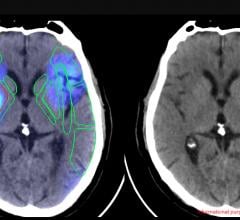April 5, 2007 - Controversy over the effectiveness of CAD for screening mammography mounted with recent findings from a study led by Joshua J. Fenton, M.D., M.P.H., on the influence of computer-aided detection (CAD) on the performance of screening mammography, which was published in the April 2007 issue of The New England Journal of Medicine (NEJM). Researchers found that the use of CAD was associated with reduced accuracy of interpretation of screening mammograms.
The study evaluated the association between the use of CAD at mammography facilities and the performance of screening mammography from 1998 through 2003 at 43 facilities in three states. With data collected from 222,135 women and 429,345 mammograms, researchers found that diagnostic specificity decreased from 90.2 percent before implementation to 87.2 percent after implementation, the positive predictive value also decreased from 4.1 percent to 3.2 percent and the rate of biopsy increased by 19.7 percent. Analyses of data from all 43 facilities showed that the use of CAD was associated with significantly lower overall accuracy than was non-use.
In an editorial commentary, published in the same issue of the Journal, Ferris M. Hall, M.D., acknowledged that while the study was �the most comprehensive study analysis of computer-aided detection in breast screening to date,� it was flawed due to the failure to assess the time required to adjust to CAD � the seven sites contributing CAD cases to the Fenton study had been using CAD for a time period ranging from 2 months to several years with an average amount of time in use of 7 months.


 June 06, 2023
June 06, 2023 









